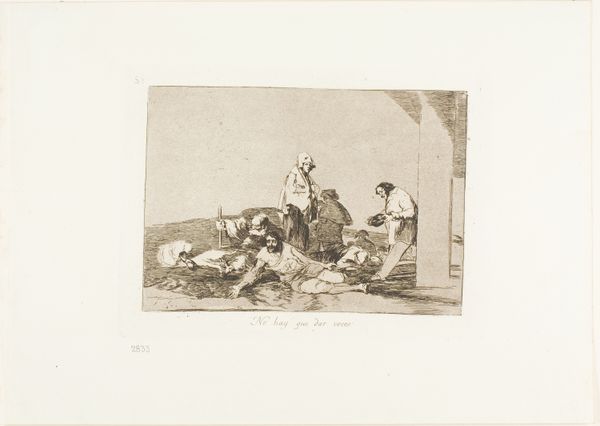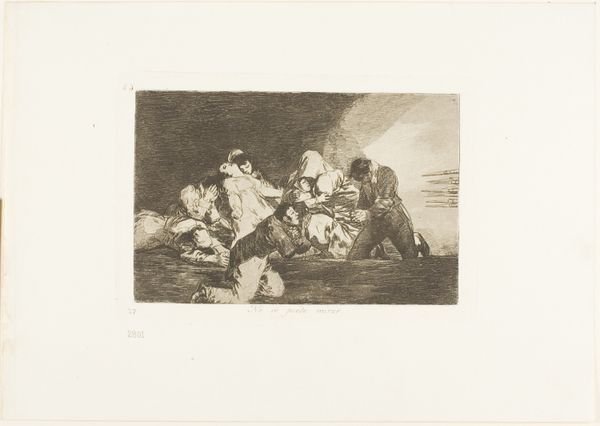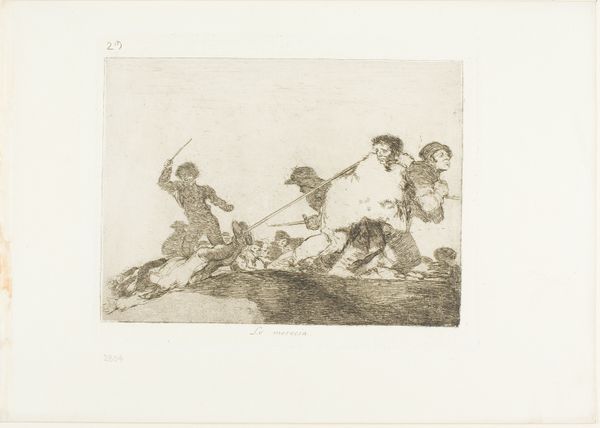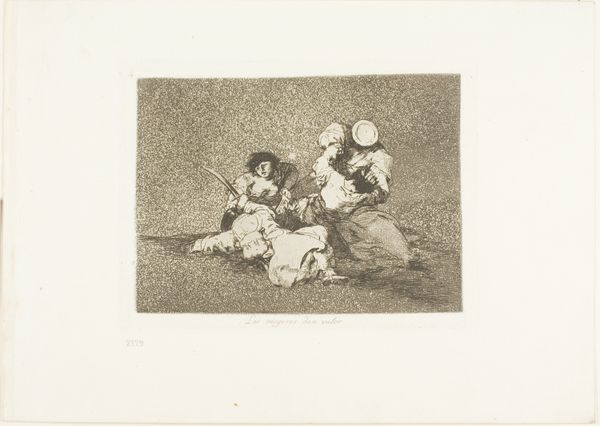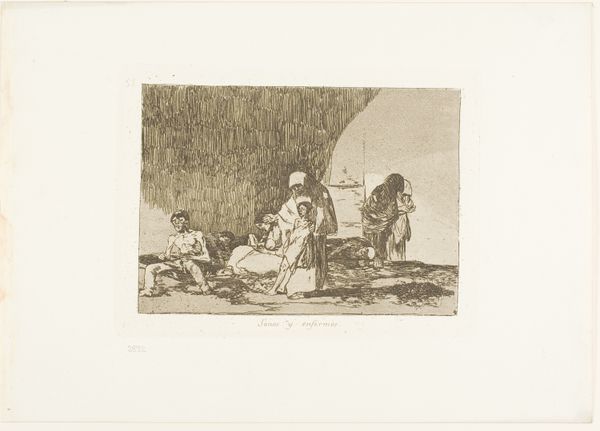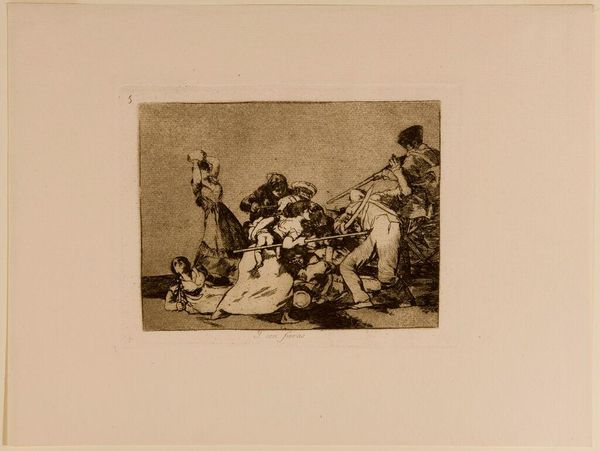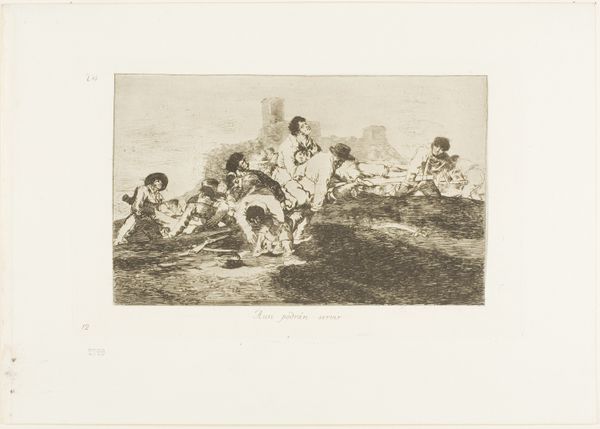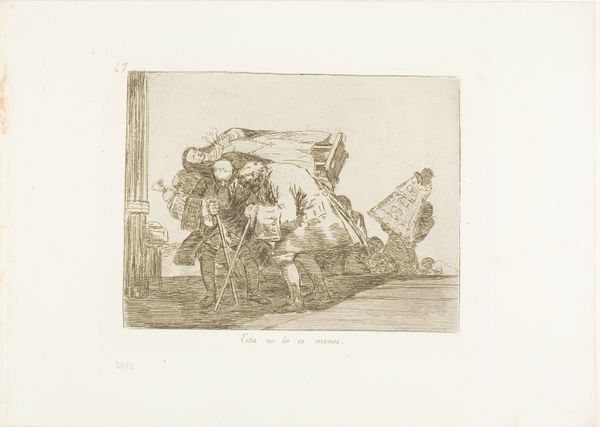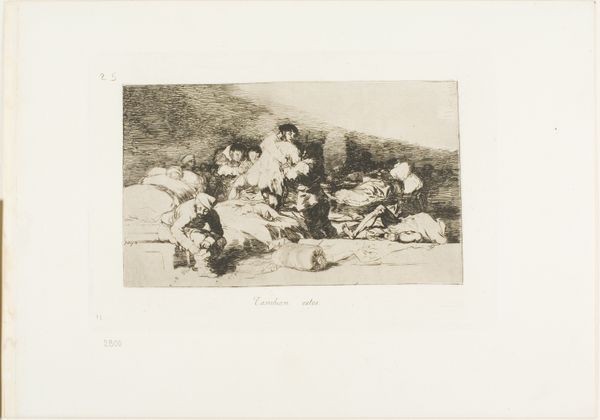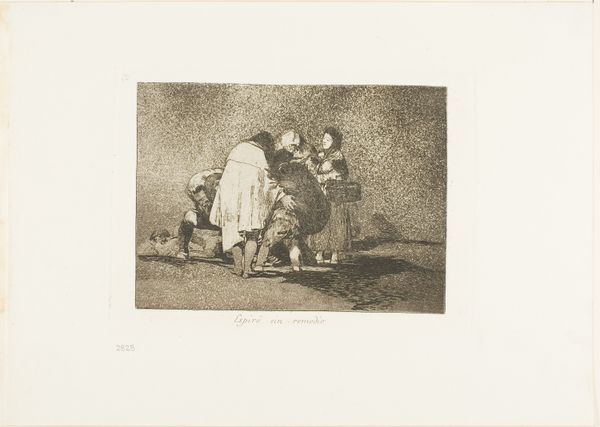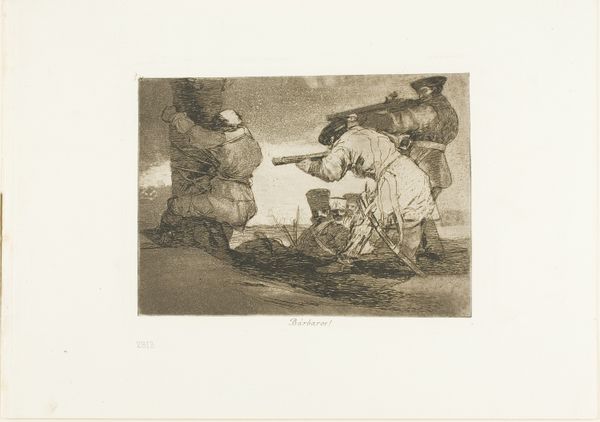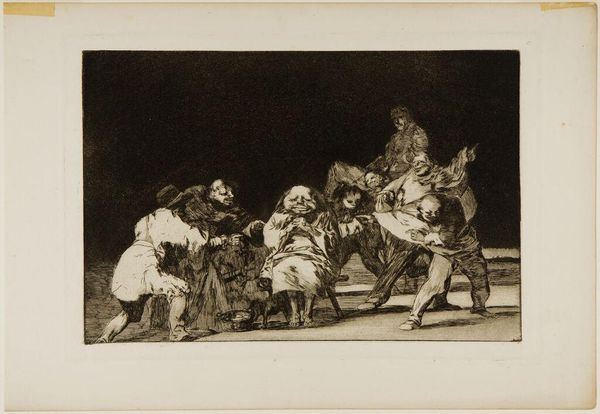
And they are like wild beasts, plate five from The Disasters of War Possibly 1812 - 1863
0:00
0:00
drawing, print, etching, paper
#
drawing
#
narrative-art
# print
#
etching
#
figuration
#
paper
#
romanticism
#
history-painting
Dimensions: 134 × 183 mm (image); 155 × 208 mm (plate); 240 × 338 mm (sheet)
Copyright: Public Domain
Curator: This harrowing image before us is titled "And they are like wild beasts, plate five from The Disasters of War," a print created by Francisco de Goya. It's part of a larger series of etchings, likely produced between 1812 and 1863, and held here at the Art Institute of Chicago. Editor: It’s brutally effective, isn't it? Just a swirl of bodies rendered in stark contrasts. There's a palpable sense of chaos and violence leaping off the paper; almost unbearable. What were his processes when creating it? Curator: Well, being an etching, the labor involves considerable chemical and physical work. The process begins by covering a copper plate with a waxy, acid-resistant ground. The artist then scratches an image into this ground, exposing the metal. The plate is immersed in acid, which bites into the exposed lines, creating grooves. The deeper the bite, the darker the line. Editor: So it's controlled decay, essentially? I am really wondering, looking at this piece, about how Goya’s personal experiences influenced such stark depictions. “The Disasters of War” clearly engages with political and social commentary... Curator: Absolutely. Remember, Goya witnessed firsthand the Peninsular War between Spain and France. The entire series acts as a visual record and a powerful indictment of the brutality of conflict. And plate five, specifically, seems to focus on the barbarity inflicted upon civilians. Editor: Given the printmaking medium, I'm curious how these images circulated and what kind of audience he might have intended to reach with such graphic depictions. Curator: Prints were more easily distributed than paintings, thus reaching a wider audience. But prints still needed investment and were only widely viewed by certain demographics. I can only suppose it would allow Goya's perspectives on the disaster to be accessed on a mass scale; something paintings and the Royal collections just could not allow. Editor: And this distribution no doubt shaped, or even challenged, how the war was understood publicly. It reframes the romantic heroism of warfare. He almost throws a gauntlet at the socio-political circumstances that condoned such acts. Curator: He's forcing us to confront uncomfortable truths, making us complicit in looking, perhaps reflecting upon our consumption of violence both then and now. Editor: It truly is unsettling. After diving into this work’s socio-political impact and examining its brutal making-of, I am left pondering not just its creation, but our reaction to it, even centuries later. Curator: It's a reminder that art can serve as both a mirror reflecting humanity's darkest impulses and a call to prevent these behaviours in the future.
Comments
No comments
Be the first to comment and join the conversation on the ultimate creative platform.
